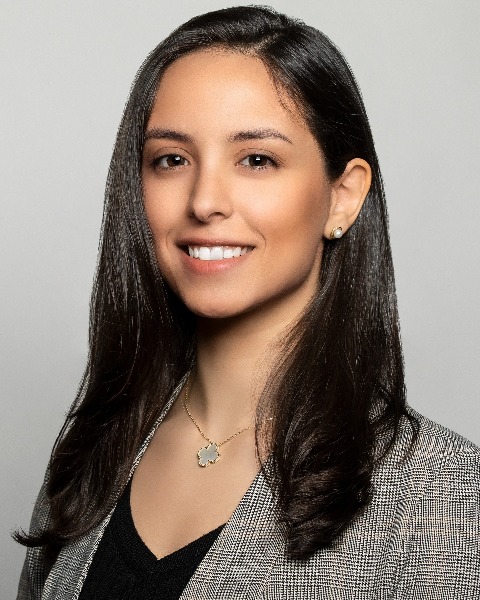To Implant or Not To Implant: A Case Series on the Rare Breast Implant-Associated Anaplastic Large Cell Lymphoma
ePosters

Dina Moumin, MD
Radiology Resident
Icahn School of Medicine at Mount Sinai Morningside/West
Presenter(s)
Background: Breast implant-associated anaplastic large cell lymphoma (BIA-ALCL) is a rare, distinct subtype of T-cell lymphoma that occurs after breast implantation. Although the incidence is not well-defined, a 2020 prospective cohort study reports the incidence as 1 in 355 patients, much higher than previously reported. The typical presentation is late-onset breast swelling secondary to peri-implant seroma. Patients may also present with a palpable mass, although this form is less common and more aggressive. Early-onset seromas, defined as occurring within 1 year of implantation, are typically attributed to surgical or implant complications. Late-onset seromas occur more than 1 year after implantation and are more rare, with an incidence that varies between 0.1% to 1.7%. While delayed seromas are more likely to be reactive secondary to trauma or low-grade infection, BIA-ALCL is diagnosed in up to 10% of cases. Mammography is gold-standard for breast cancer screening, but it is not as accurate in the detection of peri-implant seromas. Initial evaluation of swelling related to breast implants includes ultrasound, and, if results are inconclusive, MRI. Ultrasound has a high sensitivity for peri-implant fluid detection and can be used to perform image-guided FNA from which cytology can be sent. For definitive diagnosis, the radiologist must relay suspicion for BIA-ALCL so that pathologic analysis with immunostaining, which would demonstrate CD30 positivity, is performed. To that end, a heightened awareness of BIA-ALCL among radiologists is vital to ensure appropriate testing and to avoid misdiagnosis.
Learning Objectives: 1. Review the epidemiology and clinical presentation of BIA-ALCL.
2. Discuss the radiologic and pathologic features of BIA-ALCL through a series of cases obtained by our institution.
3. Discuss comparison cases of benign implant-associated seromas.
4. Emphasize the importance of maintaining a high index of suspicion for BIA-ALCL to establish the proper pathologic diagnosis.
Abstract Content/Results: The first portion of the presentation will provide background education on BIA-ALCL and benign implant-associated seromas. The remainder of the presentation will be a case-series highlighting the imaging features that can be seen with both entities on ultrasound and MRI. Approximately 5-10 cases will be presented.
Conclusion: The case series presented demonstrates a group with cytology-proven BIA-ALCL as well as comparison cases of benign implant-associated seromas. Through this case series, we hope to heighten awareness of BIA-ALCL to ensure timely recognition and management of this rare yet significant entity.
Learning Objectives: 1. Review the epidemiology and clinical presentation of BIA-ALCL.
2. Discuss the radiologic and pathologic features of BIA-ALCL through a series of cases obtained by our institution.
3. Discuss comparison cases of benign implant-associated seromas.
4. Emphasize the importance of maintaining a high index of suspicion for BIA-ALCL to establish the proper pathologic diagnosis.
Abstract Content/Results: The first portion of the presentation will provide background education on BIA-ALCL and benign implant-associated seromas. The remainder of the presentation will be a case-series highlighting the imaging features that can be seen with both entities on ultrasound and MRI. Approximately 5-10 cases will be presented.
Conclusion: The case series presented demonstrates a group with cytology-proven BIA-ALCL as well as comparison cases of benign implant-associated seromas. Through this case series, we hope to heighten awareness of BIA-ALCL to ensure timely recognition and management of this rare yet significant entity.

